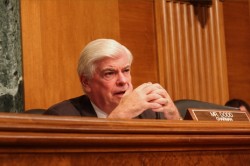 As President Obama weighs a sweeping new Executive Order that would establish a coordinated “government-wide effort to promote diversity and inclusion” throughout the federal workforce, the Dodd–Frank Wall Street Reform and Consumer Protection Act of 2010 has already formalized diversity efforts within the financial regulatory sector.
As President Obama weighs a sweeping new Executive Order that would establish a coordinated “government-wide effort to promote diversity and inclusion” throughout the federal workforce, the Dodd–Frank Wall Street Reform and Consumer Protection Act of 2010 has already formalized diversity efforts within the financial regulatory sector.
Such developments have led a growing number of experts to conclude that big government may be setting a new benchmark for big business in the United States — at least when it comes to diversity in the workplace. Consequently, now may be the right time for corporate recruiters to start removing potential barriers from the hiring process.
That’s not necessarily a bad thing either considering that the then-Nextel Communications Inc. reported a savings of nearly three times as much in turnover costs as it spent on a $1.2 million investment in diversity training back in 2003.
Largest Employer
“You can’t get around the fact that the federal government is the nation’s largest employer,” observes Eric Peterson, manager of diversity and inclusion at SHRM.
Peterson acknowledges that there is likely to be a ripple effect in corporate America from diversity activities in the federal government. “When smart organizations see this happening in the news and they see President Obama signing a lot of these policies into effect, they are going to take notice and say ‘this is the direction the country seems to be going in and we better respond to that.”
Allen B. Roberts, a member of the law offices of Epstein, Becker and Green and Managing Shareholder of the New York office, agrees the federal bureaucracy is setting the new best practices for businesses to follow with regard to diversity.
“In the instance of the (Dodd-Frank) statute and the new Executive Order, what you’ve got is not only someone out there saying ‘this is the new best practice,’ but also you’ve got some teeth with it,” according to Roberts, who co-chairs his firm’s Whistleblowing and Compliance Subpractice Group.
Interagency Council on Diversity and Inclusion
According to a draft of the President’s Executive Order obtained by The New EEO Source, the government plans to create a high-level Interagency Council on Diversity and Inclusion. Its mission would be to develop a Government-wide Diversity and Inclusion Strategic Plan. The Council would be co-chaired by the director of the Office of Personnel Management and the director of the Office of Management and Budget.
It would consist of the heads of 19 executive departments and agencies — including many of the government’s largest employers — and such other departments and agencies as the President or chairs may designate or invite.
“Our nation derives strength from its commitment to equal opportunity for all and from the diversity of its citizenry,” the draft states. “We are at our best when we draw on the talents of all parts of our society, and our greatest accomplishments are realized when diverse perspectives are brought to bear to overcome our greatest challenges.”
“For the federal government as an employer, a commitment to equal opportunity, diversity, and inclusion is critical. Securing and maintaining a diverse, qualified workforce is one of the cornerstones of the merit based civil service,” the draft states.
Dodd-Frank
Section 342 of Dodd-Frank is specifically aimed at financial regulatory agencies, and extends to “all business and activities of the agencies at all levels, including in procurement, insurance, and all types of contracts.”
It charges agencies to develop standards for increased participation of minority-owned and women-owned businesses in the programs and contracts of the agency, including standards for coordinating technical assistance to those businesses.
Section 342 specifically applies to agency directors of the Department of the Treasury, the Federal Deposit Insurance Corporation, the Federal Housing Finance Agency, each of the Federal Reserve banks, the Federal Reserve Board, the National Credit Union Administration, the Office of the Comptroller of the Currency, the Securities and Exchange Commission, and the Bureau of Consumer Financial Protection, according to Roberts.
E. Fredrick Preis, Jr., senior partner and head of the labor and employment section at the Lemle & Kelleher law firm, says private financial institutions are concerned by the provisions of Section 342. “Most of them already have diverse workforces to some extent. It’s certainly brought home to them that they need to continue to do so,” says Preis, whose firm represents management.
Recruiters Need Specific Goals
Organizations that follow the government’s lead on diversity will have to be very specific in defining program goals and expected outcomes — preferably up front, say experts. This should include keeping track of who is hired for a particular job and who is not hired. It should also include a method of tracking the source that was used to find each candidate and some method of measuring the effectiveness of various sources in achieving specific diversity goals.